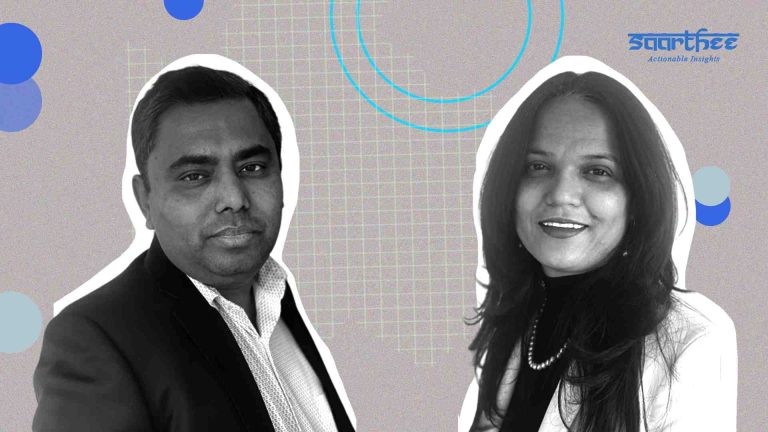
The adoption of analytics and data science in banks has been witnessing a new high. There is increased adoption in enhancing the customer experience to adding more value to the business in the entire BFSI sector.
RBL is one of the leading private sector banks that is using analytics adopting in areas such as strategic planning, change management and portfolio management to make data-driven decisions.
Analytics India Magazine got in touch with Shivani Venkatesh, the head of client insights at RBL Bank to get a sneak peek into how it is playing around with data science and artificial intelligence to up their game. Venkatesh has been associated with the bank since 2016 and has been focusing on harnessing big data to gain analytics insights to enable revenue gains, cost saves or enable decision support. She has also been mandated with helping to drive the democratisation of data within the bank and enable the next generation of digital initiatives through analytical interventions.
Here are the interview excerpts:
AIM: How has RBL Bank’s investments in digital technologies and data analytics helped you in the long run?
SV: RBL Bank is a new age bank and analytics has been identified as a key differentiator for us. Over the past few years, the ask for more nuanced data to drive decision making has become a norm within the bank. We support almost all verticals within the bank from consumer banking to human resources, where there is a need to find an analytics solution to a business problem. To make timely and informed decisions, we support all verticals with intelligence using the most precise scientific techniques and business context-sensitive manner. Our focus is on harnessing the big data platform and reaping the benefits of a comprehensive integrated data platform.
AIM: How is RBL Bank improving its offerings using data analytics? Has data analytics been instrumental in reaching out to more customers?
SV: RBL bank has been leveraging analytics to manage each stage of the customer life cycle better from acquisition to retention. Data plays a key role in defining and shaping offline and digital acquisition strategies across the bank. Post-acquisition analytics is used extensively to drive the customer life cycle management including cross-sell, upsell and retention. Analytics therefore not only helps to reach out to more customers but has also made those reach outs more personalised as well as make the impact measurement of such initiatives possible. We are also in the process of leveraging AI to understand customer journeys better and improve customer service.
AIM: What are some of the data science tools that you experiment with? What drives the choice of tools?
SV: We leverage a mix of open source technologies such as R, Python along with licensed products for marketing campaign automation, digital customer journey tracking, conversational analytics etc. We have created a data lake on-premise with a roadmap to move it to the cloud over the next 12-18 months. We also experiment with a host of microservices on the cloud for various use cases. For us the business case, customer/user experience has always been the key driver that influences our choices. Also, we see open source technologies to be the future as the pace of things move from research to application quickly given the ever-increasing user community that is collaborating to use these platforms. Additionally making Capex heavy technology investments when technology is evolving so rapidly looks challenging, so asset, quick to deploy pay per use/ open source technologies are gaining popularity.
AIM: What have been some of the unique factors that impact scaling up adoption and use of analytics in the banking space?
SV: Banks have a complex multi-product architecture. Each product, function and its requirements from an analytics perspective are different and need to be well understood before an analytical solution can be arrived at for the same. Second, we usually have legacy applications and numerous satellite systems so getting all the data to flow into one place and enrich the data lake to keep it current is a challenge in itself. Thirdly as a financial services provider, we have to be extremely cautious about keeping data secure. So any project that we embark on has to be built keeping these principles in context. Also, we need to keep in mind that analytics needs to clearly measure and demonstrate the outcomes achieved. This is not specific to financial services but industry agnostic. There can be only three things that an analytics project delivers as an outcome – revenue enhancement, cost-saving and/or decision support. So as we demonstrate gains and talk about these to more stakeholders, it becomes a virtuous cycle where more users want to adopt analytics.
AIM: How are you building a safe data architecture at RBL Bank?
SV: We have an Information Security policy in place and the principles laid down in the policy are integrated into all our data-related initiatives.
AIM: How is RBL Bank using AI and machine learning in its offerings?
SV: AI and Machine learning are being leveraged in multiple use cases across the organisation from improving customer service to predicting risk and understanding the voice of the customer and employees better. It is an exciting time as the availability of microservices on the cloud has made it viable to explore use cases that were previously unviable. We will continue to leverage AI/ML to power various initiatives across business and support verticals in line with the vision of the bank.
AIM: RBL Bank hiring plans /strategy for analytics?
SV: Our strategy has been to hire from both within and outside the financial services industry. We have a pretty intensive evaluation process, where candidates have to respond to coding assignments and case study based questions. Once on-boarded, data scientists get exposed to the entire value chain of activities such as data wrangling, feature creation, building/maintaining the ML models and business stakeholder interaction. This gives them opportunities for holistic development and excellent exposure.
AIM: Future trends that you see?
SV: Cloud Adoption – there is a lot more maturity and understanding around what can and can’t happen on the cloud now than a couple of years back. While the Cloud has always Infrastructure-as-a-Service, today it is the micro-services and their availability and adaptation to the Indian scenario (languages, accent, culture, etc.) which is making some low hanging use cases really attractive from a cost-benefit perspective.
User Acceptance – As users become more data and analytics savvy, acceptance and application of analytics are becoming more widespread. The biggest challenge in leveraging AI still remains black box algorithms/models. As adoption of analytics is increasing and we develop use case-specific validation techniques, users are more comfortable with trading explainability with predictive power.
The democratisation of data- As users become more “data-hungry”, we are working to simplify access to data and make it more intuitive to ask questions of data and get answers. This basically means omnichannel access to data, NLP capability and shorter time to insights for users.
Leveraging new sources of data- Traditionally for various use cases, very few external data sources have been available and proven to be reliable. Gradually alternate data sources like tax payments data, stock market data, social media transactions, various government databases are becoming broad-based, accessible apart from “digital” big data sources. This is also helping us to look beyond internal data and outside the bank. Within the bank as well it is becoming feasible now to process unstructured, semi-structured data which earlier was not collected and stored in a way that facilitated analyses and it was also too expensive to process.


















































































